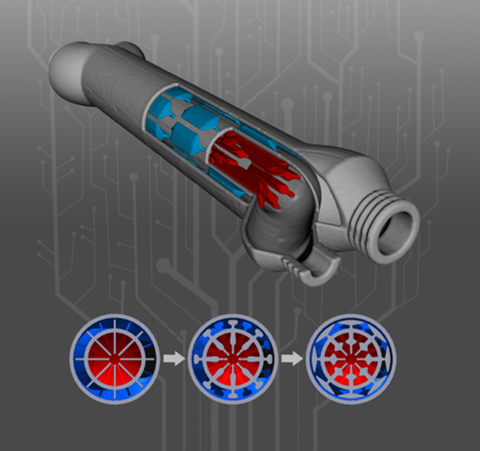Designing for Failure

My research photograph was recently selected as a semi-finalist in the 2021 UIUC Image of Research competition. Images were selected from a pool of over 100 applications based on image artistry, accompanying text, and the connection to academic research. You can read my entry below, and find all semi-finalists at the linked website.
Have you ever noticed how mangled cars are after high-speed accidents? Although it may look chaotic, it is the result of careful design. In the 1950s, automobile engineers began incorporating crumple zones, or areas that are designed to fail in controlled and predictable ways. During a collision, the crumple zone deforms, absorbing impact energy and slowing the rate of vehicle deceleration. Understanding failure mechanisms is what allows engineers to design safer, more efficient products. My research focuses on assessing the quality of additively manufactured, or 3D printed, parts. With this new technology, we can manufacture products with fantastically complex geometries in new materials. But the question remains: how do these geometries and new materials behave under different loading conditions? To answer this, we conducted compression tests on hexagonal lattices that were printed in cyanate ester, a high-temperature-resistant polymer. As the load increased slowly (quasi-static testing), the 1 cubic inch lattice supported over 560 pounds before catastrophically failing! At 960 frames per second, we observe an extravagant explosion and release of elastic energy stored in the lattice as it fails. Next time you observe something fail, consider that perhaps it was performing exactly as intended.
Related Tweets
Congratulations to the finalists in the 2021 Image of Research Exhibition!
— University of Illinois (@Illinois_Alma) March 18, 2021
Vote for your top three by March 22. ▶️ https://t.co/8uwYhUp3Qh pic.twitter.com/MSG7KCyT1s
Voting is open for the @GradCollegeIL's 2021 Image of Research Exhibition!
— CSL at Illinois (@CSL_Illinois) March 17, 2021
Read all about the images from across campus and vote for your top three favorites. There are a number of fellow @uofigrainger students! https://t.co/KgMKbJEkQ2 pic.twitter.com/mmVLWGmx2p
Congrats 🎉 to the #ILLINOIS Graduate Student Image of Research semifinalists!
— Grad College Illinois (@GradCollegeIL) March 10, 2021
Explore the online gallery! Help determine the People's Choice Award ($100) & vote 🗳 for your top 3.
📸 https://t.co/Upatx0QUrB
Learn more ➡️ https://t.co/LmtBSVBz98 pic.twitter.com/hZfOmUH0WT




